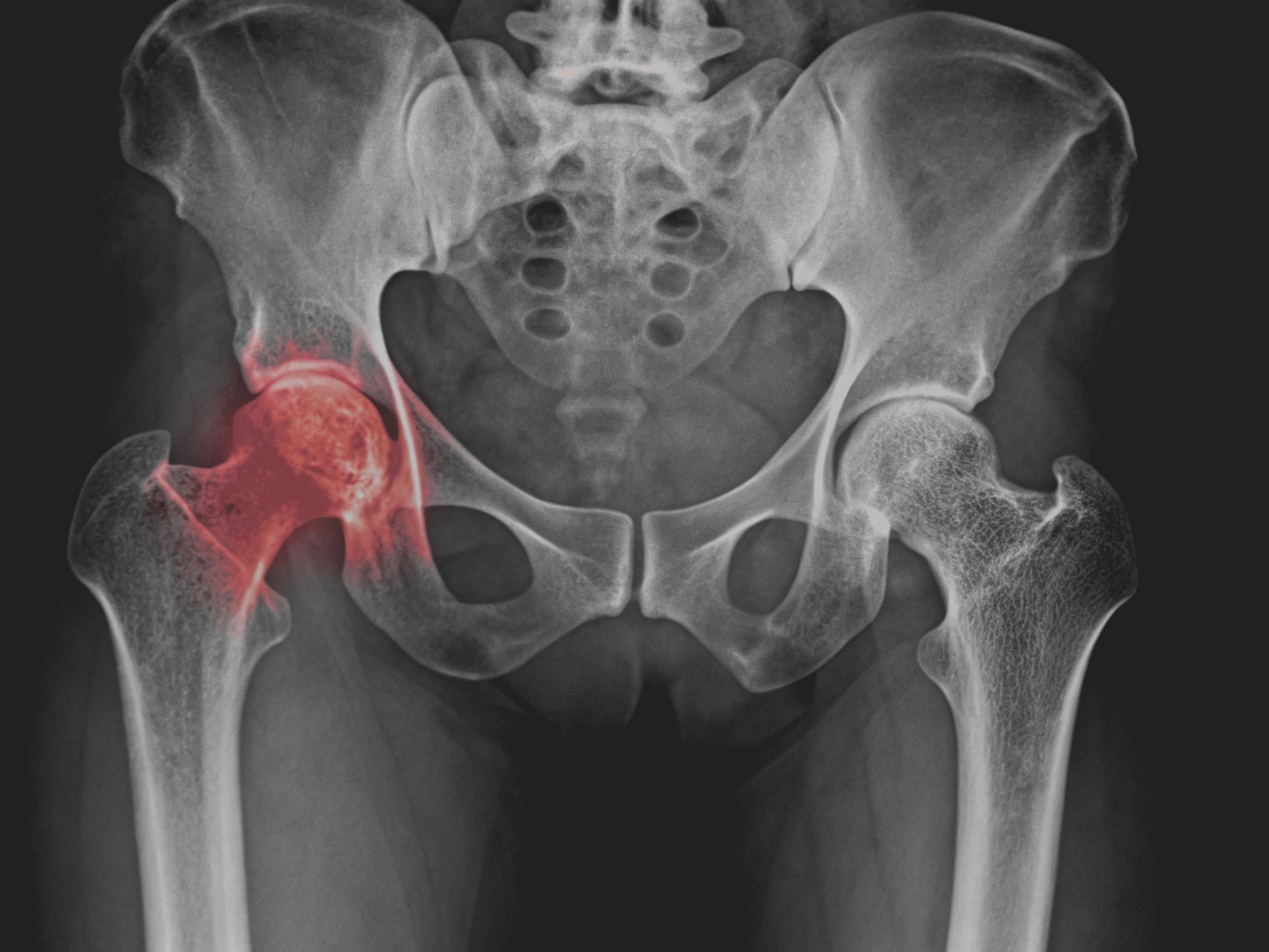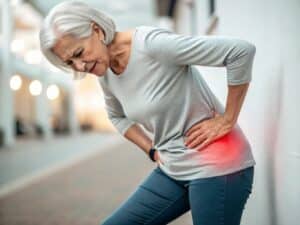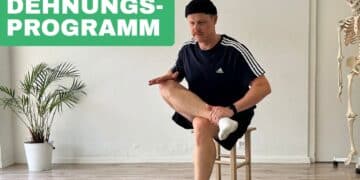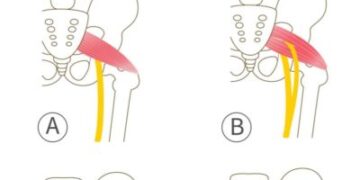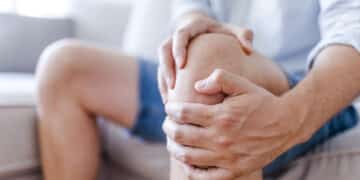Hip joint arthrosis / coxarthrosis
Osteoarthritis of the hip joint - causes, symptoms and treatment options
Osteoarthritis of the hip joint, known as Coxarthrosisis a degenerative joint disease that affects the hip joint. This form of Osteoarthritis is one of the most common joint diseases and occurs mainly in older people, but can also affect younger adults.
What is hip osteoarthritis?
The hip joint is made up of the acetabulum (part of the pelvic bone) and the femoral head (part of the thigh bone). In a healthy joint, a thick layer of cartilage protects the joint surfaces and acts as a shock absorber and lubricant. This layer enables pain-free and smooth movement of the hip joint. However, if the cartilage becomes thinner and wears away, this is known as hip osteoarthritis. The first cracks and gaps in the cartilage are early signs of this disease.
Exercises to stabilize your hips
You can do this effective workout from the comfort of your own home.
Easy-to-implement exercises strengthen your hips and improve your balance. Start now and enjoy pain-free mobility!
How hip osteoarthritis develops
Causes of hip osteoarthritis
The most common trigger for cartilage wear is age-related degeneration. This change is comparable to the formation of wrinkles on the skin with age. But old age is not the only reason: injuries, accidents, congenital deformities or chronic diseases such as rheumatism or diabetes can also lead to hip osteoarthritis. In younger patients, obesity and lack of exercise can also accelerate the development of this disease.
Recognizing symptoms of hip osteoarthritis
The first signs of hip osteoarthritis are often morning start-up pain that subsides after a short period of movement. The pain returns with heavy exertion, but in the early stages it is rarely permanent. This early stage is often underestimated, although this is when targeted therapy would be most effective.
In advanced stages, however, when the cartilage is severely degraded, chronic pain occurs. Those affected feel pain with movement and strain. Typically, the hip joint itself hurts and can radiate into the groin, thigh or lower back. Discomfort when climbing stairs or standing up after sitting for a long time is also typical. The pain is often described as drilling and dull and is accompanied by a stiff hip region.
Diagnostic methods
The diagnosis of hip osteoarthritis is usually made using X-rays. Such an examination is preceded by a detailed consultation with a medical history and physical examination. The doctor assesses the gait pattern and mobility of the hip joint using specific tests. X-rays provide information about the condition of the cartilage and bone structures in the joint and show the extent of the osteoarthritis. For further clarification, an MRI (magnetic resonance imaging) can be used to visualize cartilage, muscles and tendons in detail.
Therapeutic approaches for hip osteoarthritis
Even though cartilage wear cannot be reversed once it has reached a certain stage, there are numerous ways to prevent it. Alleviate symptoms and slow down the progression of the disease. It is important to identify the causes and tailor the therapy accordingly.
Conservative therapies
The non-surgical treatment options include
- Joint-friendly activitiesSports such as swimming, Nordic walking or Tai Chi are excellent for maintaining mobility and muscle strength without putting excessive strain on the joint.
- Physiotherapy and movement therapyTargeted exercises strengthen the surrounding muscles and stabilize the joint. This Improves joint function and significantly reduces pain. Regular sessions can significantly improve quality of life by increasing everyday mobility.
- AidsUse of supports, walking aids or specially adapted insoles to relieve the hip joint.
The benefits of physiotherapy
The Physiotherapy plays a crucial role in the treatment of hip osteoarthritis. Targeted exercise therapy stabilizes the joint and strengthens the surrounding muscles. This improves the function of the joint and significantly reduces pain. Patients also learn special exercises that they can do at home to continuously improve their mobility and strength.
A major benefit of physiotherapy is the preparation for a possible operation. Pre-operative physiotherapy helps patients to prepare for an operation and speed up their recovery. You will learn how to use walking aids correctly and find out which exercises will help you to become mobile again quickly after the operation. Pre-operative measures can increase the success of the operation and shorten the recovery time.
When does surgery make sense?
If conservative therapies are no longer sufficient and the symptoms are severely limited, surgery may be necessary. Many sufferers hesitate out of fear or uncertainty, but the longer the operation is delayed, the more the joint is spared. This leads to a weakening of the muscles and worsens general mobility. Timely surgery can significantly alleviate pain and considerably improve mobility and quality of life.
Conclusion
Early diagnosis and targeted treatment of hip osteoarthritis are crucial for a high quality of life. If the first signs are taken seriously and treated in good time, joint function can be maintained and pain effectively alleviated. If the symptoms are severe, an operation can pave the way back to greater mobility and a more active life. Seek advice from a specialist at the first signs of discomfort and take advantage of the many options offered by Physiotherapy. Timely exercise therapy and stabilization can help you to remain pain-free and active.
Categories
- Osteoarthritis
- Leg
- Extensions
- Dry needling
- Elbow
- Foot
- Balance
- Hand
- Hip
- Pine
- Knee
- Headache
- Lymphatic drainage
- Mobilization
- Muscle pain
- Myofascial therapy
- Neck pain
- Physiotherapy Höngg
- Physiotherapy Wipkingen
- Physiotherapy Zurich
- Rehabilitation
- Back pain
- Shoulder arm
- Shoulder pain
- Pregnancy
- Dizziness
- Sports
- Trigger points
- Exercises
- Lower leg
- Injury prevention
- Wade
- What to do?
- Wound healing
Stretching program
Your stretching program Stretching is an essential foundation for your mobility and well-being....
Read furtherHip joint arthrosis
Osteoarthritis of the hip joint - causes, symptoms and treatment options Osteoarthritis of the hip joint, known as coxarthrosis,...
Read furtherPiriformis syndrome - What helps against pain in the buttocks?
Piriformis syndrome and lumbago at a glance What is piriformis syndrome? Piriformis syndrome is a...
Read furtherOsteoarthritis - what you should know about the joint disease
What is osteoarthritis? Osteoarthritis is a widespread degenerative joint disease caused by the wear and tear of cartilage tissue.
Read further
